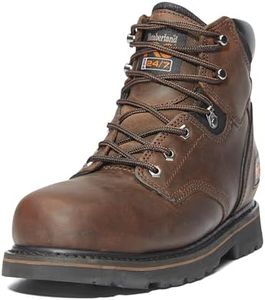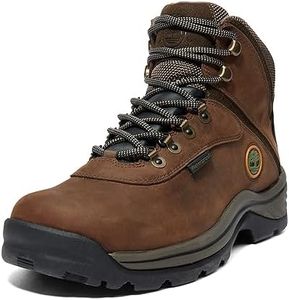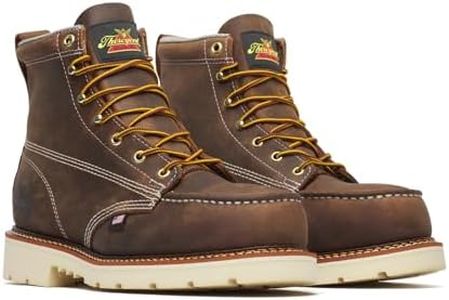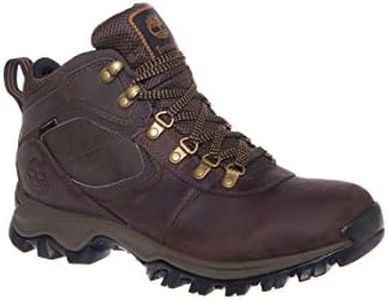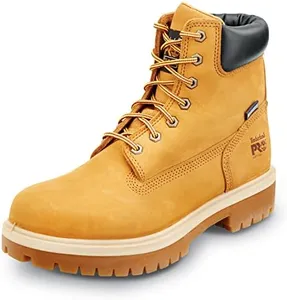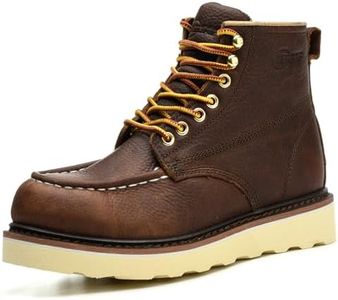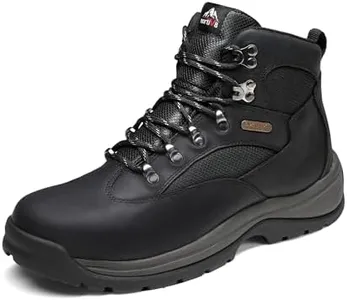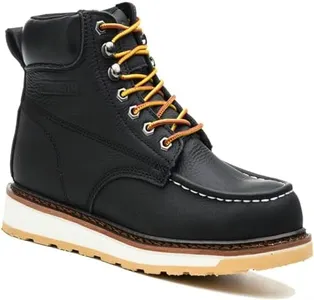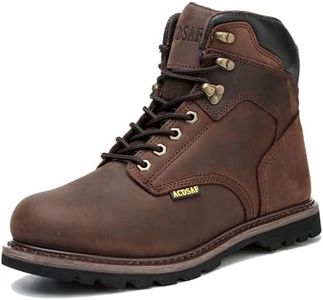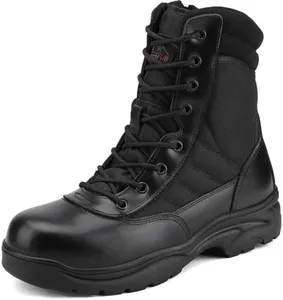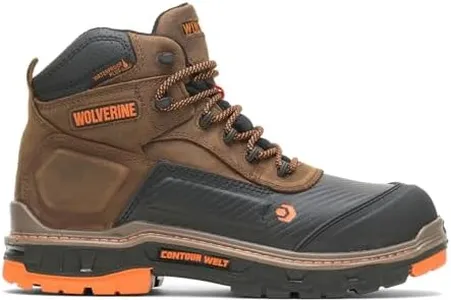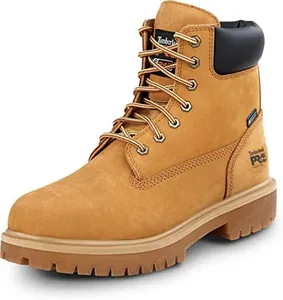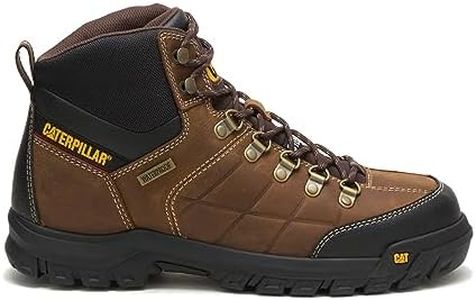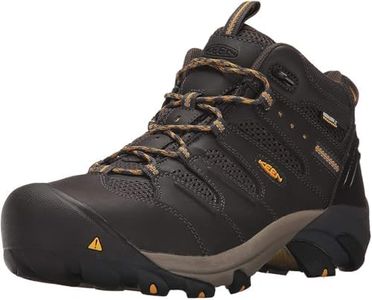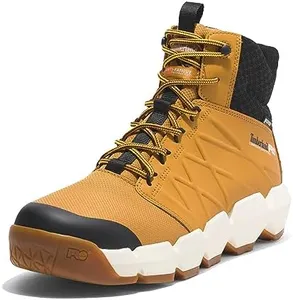10 Best Work Boots 2025 in the United States
Our technology thoroughly searches through the online shopping world, reviewing hundreds of sites. We then process and analyze this information, updating in real-time to bring you the latest top-rated products. This way, you always get the best and most current options available.

Our Top Picks
Winner
Timberland PRO Men's Pit Boss 6 Inch Steel Safety Toe Industrial Work Boot, Brown-2024 New, 9
Most important from
28956 reviews
The Timberland PRO Men's Pit Boss is designed for work environments that demand durable and protective footwear. It features a steel safety toe that meets strict US safety standards, providing solid protection against impact and compression. The boot is made from 100% leather, offering toughness and a classic look, with a rubber sole known for resisting heat, slips, oils, and abrasion—important for maintaining grip and durability on various surfaces.
Comfort is a strong point, thanks to the Timberland PRO 24/7 Comfort System which supports your arch and cushions your steps to reduce fatigue during long workdays. Electrical hazard protection is built in, meeting recognized safety standards to guard against electric shocks, which is valuable for those working near live circuits. The boot is ankle height, offering protection without being too bulky, and the fit may vary, so trying them on if possible is advisable.
Made in Bangladesh with some recycled materials in the construction, the boot also lightly touches on sustainability. It is a solid choice for industrial or construction workers who need reliable toe protection, good comfort, and slip resistance, but it may not be the best option if waterproofing or heavy insulation is required.
Most important from
28956 reviews
Timberland Men's White Ledge Mid Waterproof Hiking Boot, Brown, 10
Most important from
58515 reviews
The Timberland Men's White Ledge Mid Waterproof Hiking Boot stands out in the work boot category, especially for those who need reliable footwear for outdoor settings. One of its key strengths is the waterproofing, thanks to the premium leather upper, which helps keep your feet dry in wet conditions. Additionally, the fully gusseted tongue and rustproof lace hardware enhance durability and support, making it a solid choice for rugged work environments.
Comfort is another highlight, as the boot features an EVA footbed and midsole that provide cushioning for long hours on your feet. The fit is generally true to size, allowing for a snug yet comfortable wear, which is essential for daily tasks. The rubber sole offers good traction, helping to prevent slips on various surfaces, which is particularly important in work settings.
There are a few drawbacks to consider. While the boot is insulated, it may not be suitable for extremely cold temperatures, as the insulation level is moderate. Some users might find it a bit heavy compared to other lighter boots, which could be a factor if you're moving around a lot. Additionally, although the boot is designed to be waterproof, prolonged exposure to deep water could test its limits. It also offers some electrical hazard protection, so those who work in highly specialized environments should verify if this meets their specific safety requirements. The Timberland White Ledge Mid boot is a great option for outdoor work and casual wear, especially if waterproofing and comfort are your priorities.
Most important from
58515 reviews
Thorogood American Heritage 6” Steel Toe Work Boots for Men - Full-Grain Leather with Moc Toe, Slip-Resistant Heel Outsole, and Comfort Insole; EH Rated, Trail Crazyhorse - 10.5 D US
Most important from
5424 reviews
The Thorogood American Heritage 6” Steel Toe Work Boots are robustly designed for men who work in demanding environments. These boots are made from premium full-grain saddle leather, which not only ensures durability but also gives them a stylish, vintage look. The steel toe feature meets ASTM safety standards, providing strong protection against impact and compression, making them suitable for construction workers, electricians, and other industrial professionals.
Additionally, the boots come with a MAXWEAR 90 traction outsole, which is slip-resistant and designed to handle difficult surfaces like loose gravel and oily areas effectively. They also meet electrical hazard resistance safety standards, adding an extra layer of protection for those working with electrical systems. Comfort is another highlight; the removable ultimate shock absorption footbed, combined with a Poron comfort cushion insole, offers remarkable cushioning and moisture resistance.
The Goodyear welt construction contributes to the boots' longevity and ease of repair. However, some potential drawbacks include the mid-calf shaft height, which may not provide enough coverage for certain tasks requiring higher boots. Also, the boots might feel heavy for some users, considering the steel toe and rugged construction. Despite these minor issues, these boots are a dependable choice for anyone needing reliable safety and comfort in tough job environments.
Most important from
5424 reviews
Buying Guide for the Best Work Boots
Choosing the right work boots is crucial for ensuring comfort, safety, and durability while on the job. The right pair can prevent injuries, provide support, and withstand the demands of your work environment. When selecting work boots, consider the specific requirements of your job, the conditions you'll be working in, and your personal comfort preferences. Here are some key specifications to help you make an informed decision.FAQ
Most Popular Categories Right Now


